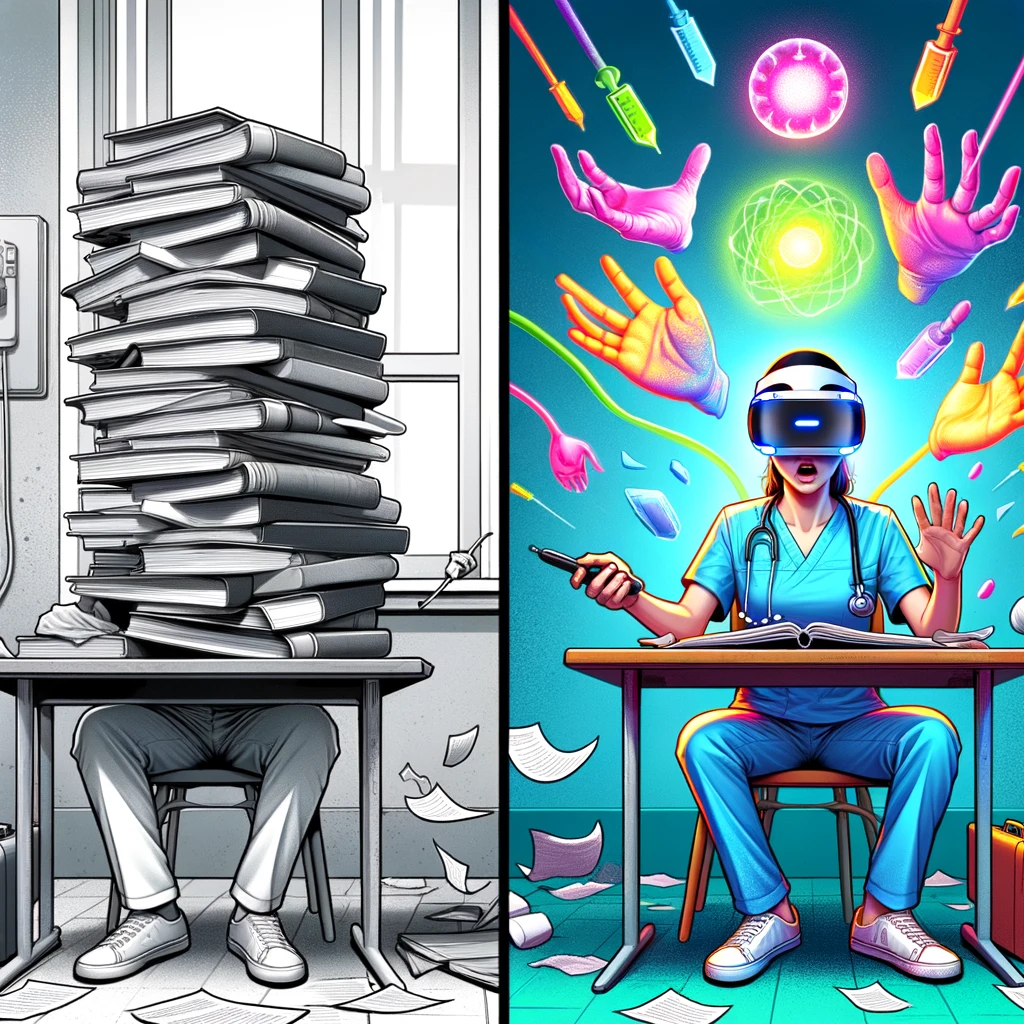
Are you ready for it?
If you’re a nurse educator, we don’t need to tell you – nursing education is a rapidly evolving field with new immersive technologies taking the forefront. Virtual Reality (VR), Augmented Reality (AR), and Spatial Computing are common terms leading this transformation. Each technology offers unique features, but VR stands out as the most practical and cost-effective solution for today’s educational needs.
But before we dive in, let’s make sure we have a clear understanding of how these immersive technologies differ.
Immersive Technologies Defined:
Virtual Reality (VR): VR immerses users in a fully digital environment that is completely separate from the real world. It requires a headset and offers the most comprehensive form of digital simulation.
Augmented Reality (AR): AR overlays digital information in the real world, viewable through devices like smartphones or special glasses. The Microsoft Hololens 2, priced at $3,500, is a leading example but remains cost-prohibitive for widespread educational use due to current hardware limitations.
Spatial Computing: This technology blends physical and digital worlds, allowing real-world objects and digital data to interact in dynamic ways, and those objects appear in your real-world space. This can be seen in the Apple Vision Pro priced at $3,500 and widely considered to be a developer’s product today. It is still in the early stages of development, requires significant computing power, and integration into mainstream applications is not ubiquitous.
Given the current technological and economic landscape, VR is the most viable option. The Meta Quest 3, priced at $499, and the HTC XR Elite, at $1,100, offer advanced VR capabilities at a fraction of the cost of AR and Spatial devices. These VR platforms provide a fully immersive experience that is crucial for training healthcare professionals, making it the best choice for nursing education today.
VR technology in nursing education allows for detailed, realistic simulations of medical scenarios. This is vital for bridging the gap between theoretical knowledge and practical application. By practicing in a risk-free virtual environment, nursing students can master their skills, make mistakes, and learn from them without the fear of real-world consequences.
VRpatients is leading the way in transforming nursing education. To explore how VRpatients can enhance your training programs and prepare students more effectively, schedule a call to collaborate and build the future of healthcare education.
